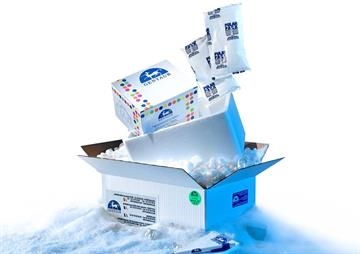- Categories
- Specials and Offers
- Custom Services
- Products
Medium Binding Capacity 96 well plates - 12x8 Well Strips on 12x8 frame (Clear)


NeoZin Neonatal database processing and report software
0.01 €Ask for quotation
On request
quantity
product details
Catalog number: 1104 - ZV-3017-NZIN-SW
Product Category: Business & Industrial > Science & Laboratory
Zivak TechnologiesGentaur
Size: each
Related Products
711021
Database Connector AJ Spare Parts and Accessories
Description Dutch: Database Connector; Description French: Database Connector
419.24 €
ABC-TC3451
Human Dermal Fibroblasts, Neonatal
Human Dermal Fibroblasts-Neonatal are isolated form neonatal human skin. Human Dermal Fibroblasts-Neonatal are cryopreserved at P1 and delivered frozen. Human Dermal Fibroblasts-Neonatal are characterized by their spindle morphology and immunofluorescence with antibody specific to fibronectin. Human Dermal Fibroblasts-Neonatal are negative for HIV-1, HBV, HCV, mycoplasma, bacteria, yeast, and fungi.
Ask for quotation
ABC-TC3457
Human Epidermal Melanocytes, Neonatal
normal Human Epidermal Melanocytes neonatal (HEMn), when grown in LIDer M, provide an ideal low serum culture model, without PMA or Cholera toxin, for the accurate testing of compounds and for use in the study of cancer or dermal biology. HEMn are cryopreserved as primary or secondary cells to ensure the highest viability and plating efficiency. Our HEMn are quality tested in LIDer M Medium to ensure optimal reduced-serum growth over a period of at least 15 population doublings at rates greater than media supplemented with higher serum, PMA or Cholera toxin. Cell Features:HEM are cryopreserved after primary culture or secondary culture isolated from human skin and expanded once or twice in culture vessels before being harvested for cryopreservation.HEMn can be grown in a low serum medium without phenol red or antimicrobials when cultured in DermaLife M Medium.HEMa can be grown in a low serum medium without phenol red or antimicrobials when cultured in DermaLife Ma Medium.Culture HEM without PMA or cholera toxin or other artificial non-specific stimulantsHEM are extensively tested for quality and optimal performance.Gentaur guarantees performance and quality.
Ask for quotation
ABC-TC3606
Human Epidermal Keratinocytes, Neonatal
The epithelial layer of the skin provides an essential function as a protective barrier against insult from the outside environment. The major cell type in this layer is keratinocytes which consists around 85% of living epidermal cells. Keratinocytes are the cells of stratified squamous epithelia. It is so named because its most abundant protein is keratin. Keratinocyte divide and are thus generated in the basal layer of the epidermis; this division is followed by a programmed death as they produce keratin and move up to the surface of the epidermis. Keratinocyte proliferation, differentiation, and apoptosis are complex and carefully choreographed processes. Besides the protective function, keratinocytes also play a central role in tissue homeostasis, wound healing, cancers, and skin-based gene-therapy. Human keratinocytes express adhesion molecules and cytokines indicating their participation in skin innate immunity and homeostasis in vivo. HEK-n from Gentaur Research Laboratories are isolated from neonate human epidermal tissue. HEK-n are cryopreserved on primary culture and delivered frozen. Each vial contains 5×10^5 cells in 1 ml volume. HEK-n are characterized by immunofluorescent method with antibodies to cytokeratine-18 and -19. HEK-n are negative for HIV-1, HBV, HCV, mycoplasma, bacteria, yeast and fungi. HEK-n are guaranteed to further expand for 15 population doublings in the condition provided by Gentaur Research Laboratories.









